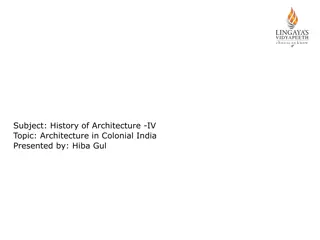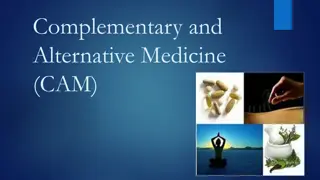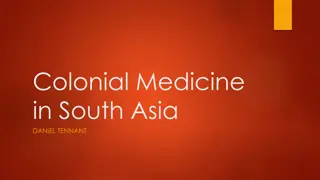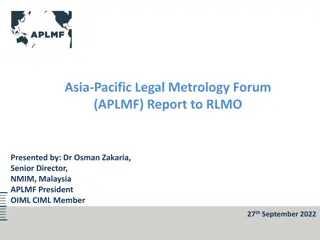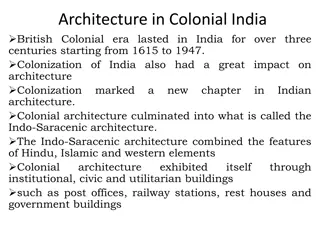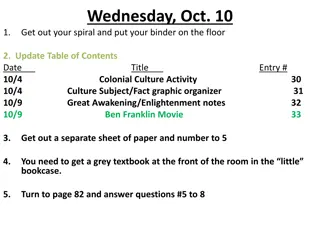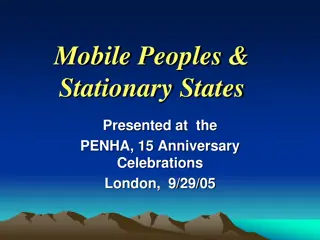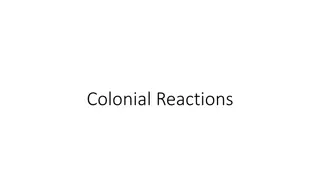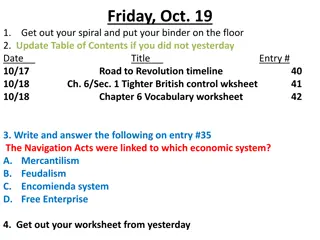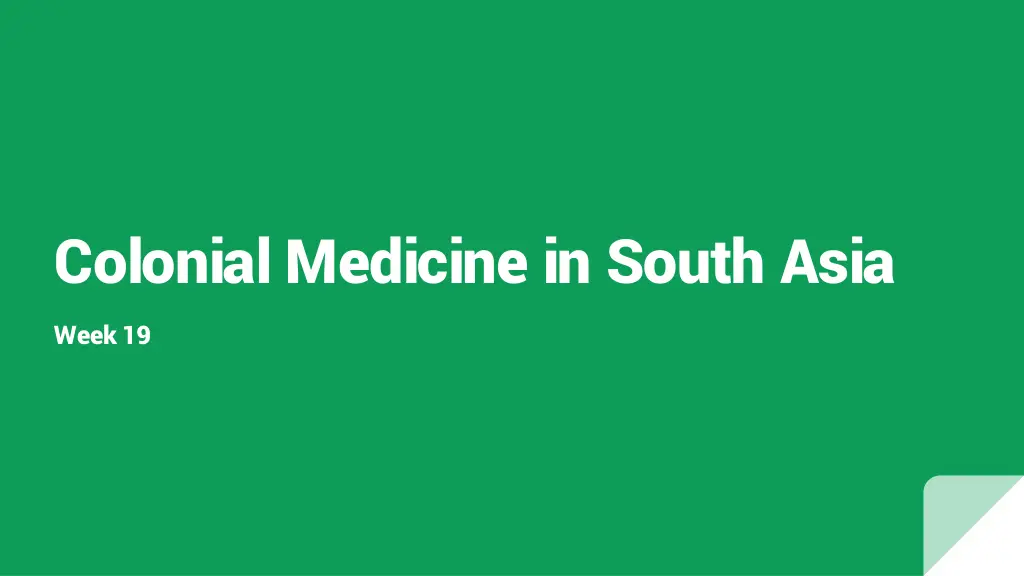
Medicine, Colonialism, and Resistance in South Asia
Explore the clash between native medical practices and colonial medicine in South Asia since the 1500s, highlighting the government's favoritism towards Western medicine, the impact of diseases like malaria and plague, and the resistance faced by Indian populations against invasive policies. Discover the evolving dynamics of health care, incarceration, and resistance during this transformative period.
Download Presentation

Please find below an Image/Link to download the presentation.
The content on the website is provided AS IS for your information and personal use only. It may not be sold, licensed, or shared on other websites without obtaining consent from the author. If you encounter any issues during the download, it is possible that the publisher has removed the file from their server.
You are allowed to download the files provided on this website for personal or commercial use, subject to the condition that they are used lawfully. All files are the property of their respective owners.
The content on the website is provided AS IS for your information and personal use only. It may not be sold, licensed, or shared on other websites without obtaining consent from the author.
E N D
Presentation Transcript
Colonial Medicine in South Asia Week 19
Medicine and Colonialism in South Asia since 1500 by Mark Harrison - There was a diversity of native medical practices in India which clashed with colonial medicine in the 1500s The government favored Western medicine in teaching settings, which caused native practitioners to evaluate and adapt their own medicine. It also saw them connecting their medicine to tradition. English policies focused on their own health and did not provide India the chance to elevate their sanitation, especially in rural areas. Malaria posed a threat to the population. However, it didn t cause the civil unrest other diseases did and was pushed down the priority list, so prevention methods were not put in place. Colonial hospitals were established to endear the population to the government, but they provided an opportunity to see that citizens were not blindly resistant to western Medicine. Indian doctors trained in western medicine stepped up to retake control of the medical system. - - - - Quote: As more and more of India fell under the sway of colonial rule, the pace of change accelerated as Indian traditions began to respond to the challenges posed by a different medical system.
Ch 5, Plague: Assault on the Body by David Arnold - - The outbreak of bubonic plague showed the differences in how disease was handled. There was international pressure to control the spread because plague was not a part of India s epidemiological landscape and could spread to other countries The government s invasive policies included full body inspection of the living and dead, forced removal to hospitals, and entry into homes thought to be infected. Some thought that this was a show of force and a way to remove native agency. The citizens resisted these changes, sometimes violently, and were distrustful of the policies. Especially because they ignored religious and cultural practices. Acceptance came when the policies were changed to be more self guided, and worked with what citizens were already rather than trying to force change. - - - Quote: Let there be no oppression in the name of sanitation.
Incarceration and Resistance in a Red Sea Lazaretto, 1880-1930 by Saurabh Mishra - Muslim Indians faced being quarantined when they got off the boat. This involved a quarantine camp and significant invasion of privacy. The author breaks down the forms of resistance to these quarantines into the three categories of protest, negotiation, and avoidance Protest: There are multiple cases where pilgrims who were prevented from beginning their hajj broke into riots, threats, or even violence in one scenario Negotiation: Mostly only an option for the wealthy. Bargained into being allowed to break health rules, better accommodations or direct contact with head officials. Avoiding: The poorest among the pilgrims found clever ways to bypass attempts at forcing them to pay for quarantine, pay for their passage, or going to the camp at all - - - - Quote: these small acts of resistance were an attempt to subvert and challenge British and European control which, in turn, was based on ideas regarding Indian Muslims that were intensely political
From Rapid Change to Stasis: Official Responses to Cholera in British-Ruled India and Egypt: 1860 to c. 1921 by Sheldon Watts In 1868, England reversed their policy on the mechanics of cholera from being spread person to person to being endemic to an area. This change mostly impacted India as they had been dealing with cholera outbreaks and had very little infrastructure or budget to use for sanitary improvements. The inspiration for the policy change was likely the building of the Suez Canal as it was controlled by multiple international powers who were worried about cholera. Doctors who fought against this narrative were silenced or coerced into changing their opinions. Almost all sanitary officials had their authority stripped. This came to a head in 1900 when drought led to famine. Aid camps became cholera super spreaders and led to thousands of deaths. Quote: Those who love quarantine, hate England. - - - - -
Questions Should challenging health policies be considered resistance? If yes, when? Would there have been less deaths if India was allowed to form their own policies on disease rather than using those made by England?

![READ⚡[PDF]✔ Emerging Space Powers: The New Space Programs of Asia, the Middle Ea](/thumb/21554/read-pdf-emerging-space-powers-the-new-space-programs-of-asia-the-middle-ea.jpg)



